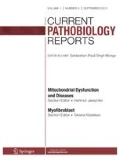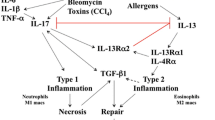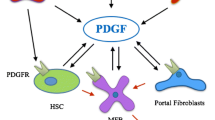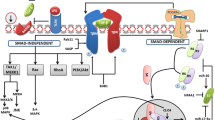Abstract
Fibrosis is a highly conserved and coordinated protective response to tissue injury. Also liver fibrosis is a wound healing process in response to chronic liver injury. Fibroblast growth factors (FGFs) and their receptors (FGFRs) are important regulators of wound healing and repair as initially demonstrated for the skin. Although current therapies target FGFRs for the treatment of hepatocellular cancer, whether endogenous FGF signaling plays a protective, pathogenic, or ambivalent role in chronic liver injury and fibrosis, is still very poorly understood. This review summarizes available data indicating that FGFRs are key orchestrators of liver regeneration and repair and that several FGFs/FGFRs also exhibit hepatoprotective and antifibrogenic effects. Furthermore, therapeutic strategies targeting FGFRs for the treatment of liver fibrosis will be critically discussed because particular caution is recommended when interfering with the complex and in wide parts still incompletely understood FGF–FGFR signaling network in chronic liver disease.

Similar content being viewed by others
References
Papers of particular interest, published recently, have been highlighted as: • Of importance
Seki E, Brenner DA (2015) Recent advancement of molecular mechanisms of liver fibrosis. J Hepatobiliary Pancreat Sci 22(7):512–518
Wallace MC, Friedman SL, Mann DA (2015) Emerging and disease-specific mechanisms of hepatic stellate cell activation. Semin Liver Dis 35(2):107–118
Hellerbrand C (2013) Hepatic stellate cells—the pericytes in the liver. Pflugers Arch 465(6):775–778
Kisseleva T, Brenner DA (2013) Inactivation of myofibroblasts during regression of liver fibrosis. Cell Cycle 12(3):381–382
Pellicoro A, Ramachandran P, Iredale JP, Fallowfield JA (2014) Liver fibrosis and repair: immune regulation of wound healing in a solid organ. Nat Rev Immunol 14(3):181–194
Werner S, Peters KG, Longaker MT, Fuller-Pace F, Banda MJ, Williams LT (1992) Large induction of keratinocyte growth factor expression in the dermis during wound healing. Proc Natl Acad Sci USA 89(15):6896–6900
Beenken A, Mohammadi M (2009) The FGF family: biology, pathophysiology and therapy. Nat Rev Drug Discov 8(3):235–253
Olsen SK, Garbi M, Zampieri N, Eliseenkova AV, Ornitz DM, Goldfarb M et al (2003) Fibroblast growth factor (FGF) homologous factors share structural but not functional homology with FGFs. J Biol Chem 278(36):34226–34236
Gong SG (2014) Isoforms of receptors of fibroblast growth factors. J Cell Physiol 229(12):1887–1895
Orr-Urtreger A, Bedford MT, Burakova T, Arman E, Zimmer Y, Yayon A et al (1993) Developmental localization of the splicing alternatives of fibroblast growth factor receptor-2 (FGFR2). Dev Biol 158(2):475–486
Antoine M, Wirz W, Tag CG, Gressner AM, Marvituna M, Wycislo M et al (2007) Expression and function of fibroblast growth factor (FGF) 9 in hepatic stellate cells and its role in toxic liver injury. Biochem Biophys Res Commun 361(2):335–341
Ho HK, Pok S, Streit S, Ruhe JE, Hart S, Lim KS et al (2009) Fibroblast growth factor receptor 4 regulates proliferation, anti-apoptosis and alpha-fetoprotein secretion during hepatocellular carcinoma progression and represents a potential target for therapeutic intervention. J Hepatol 50(1):118–127
Hughes SE (1997) Differential expression of the fibroblast growth factor receptor (FGFR) multigene family in normal human adult tissues. J Histochem Cytochem 45(7):1005–1019
Bohm F, Speicher T, Hellerbrand C, Dickson C, Partanen JM, Ornitz DM et al (2010) FGF receptors 1 and 2 control chemically induced injury and compound detoxification in regenerating livers of mice. Gastroenterology 139(4):1385–1396
• Sandhu DS, Baichoo E, Roberts LR (2014) Fibroblast growth factor signaling in liver carcinogenesis. Hepatology 59(3):1166–1173. An excellent review detailing the role of FGFs in the pathogenesis of HCC including their effects on the regulation of the tumor microenviroment and angiogenesis
• Cicione C, Degirolamo C, Moschetta A (2012) Emerging role of fibroblast growth factors 15/19 and 21 as metabolic integrators in the liver. Hepatology 56(6):2404–2411. An excellent review describing the mechanisms of action of the FGF endocrine subfamily in normal and diseased livers
Zhang X, Ibrahimi OA, Olsen SK, Umemori H, Mohammadi M, Ornitz DM (2006) Receptor specificity of the fibroblast growth factor family. The complete mammalian FGF family. J Biol Chem 281(23):15694–15700
Ornitz DM, Xu J, Colvin JS, McEwen DG, MacArthur CA, Coulier F et al (1996) Receptor specificity of the fibroblast growth factor family. J Biol Chem 271(25):15292–15297
Fibbi G, Pucci M, Grappone C, Pellegrini G, Salzano R, Casini A et al (1999) Functions of the fibrinolytic system in human Ito cells and its control by basic fibroblast and platelet-derived growth factor. Hepatology 29(3):868–878
Nakamura I, Zakharia K, Banini BA, Mikhail DS, Kim TH, Yang JD et al (2014) Brivanib attenuates hepatic fibrosis in vivo and stellate cell activation in vitro by inhibition of FGF, VEGF and PDGF signaling. PLoS One 9(4):e92273
Uematsu S, Higashi T, Nouso K, Kariyama K, Nakamura S, Suzuki M et al (2005) Altered expression of vascular endothelial growth factor, fibroblast growth factor-2 and endostatin in patients with hepatocellular carcinoma. J Gastroenterol Hepatol 20(4):583–588
Yu C, Wang F, Jin C, Huang X, Miller DL, Basilico C et al (2003) Role of fibroblast growth factor type 1 and 2 in carbon tetrachloride-induced hepatic injury and fibrogenesis. Am J Pathol 163(4):1653–1662
Liao S, Bodmer J, Pietras D, Azhar M, Doetschman T, Schultz JJ (2009) Biological functions of the low and high molecular weight protein isoforms of fibroblast growth factor-2 in cardiovascular development and disease. Dev Dyn 238(2):249–264
• Pan RL, Xiang LX, Wang P, Liu XY, Nie L, Huang W et al. (2015) Low-molecular-weight fibroblast growth factor 2 attenuates hepatic fibrosis by epigenetic down-regulation of Delta-like1. Hepatology 61(5):1708–1720. This is the first study analysing the function of different FGF2 isoforms in liver fibrosis. It demonstrates that low-molecular-weight FGF2 shows a potent antifibrotic effect, which may a novel approach to treat chronic liver diseases
Yu C, Wang F, Jin C, Wu X, Chan WK, McKeehan WL (2002) Increased carbon tetrachloride-induced liver injury and fibrosis in FGFR4-deficient mice. Am J Pathol 161(6):2003–2010
Ishikawa T, Terai S, Urata Y, Marumoto Y, Aoyama K, Sakaida I et al (2006) Fibroblast growth factor 2 facilitates the differentiation of transplanted bone marrow cells into hepatocytes. Cell Tissue Res 323(2):221–231
Tsunematsu H, Tatsumi T, Kohga K, Yamamoto M, Aketa H, Miyagi T et al (2012) Fibroblast growth factor-2 enhances NK sensitivity of hepatocellular carcinoma cells. Int J Cancer 130(2):356–364
Steiling H, Muhlbauer M, Bataille F, Scholmerich J, Werner S, Hellerbrand C (2004) Activated hepatic stellate cells express keratinocyte growth factor in chronic liver disease. Am J Pathol 165(4):1233–1241
• Takase HM, Itoh T, Ino S, Wang T, Koji T, Akira S et al. (2013) FGF7 is a functional niche signal required for stimulation of adult liver progenitor cells that support liver regeneration. Genes Dev 15;27(2):169–181. These study provides new insights into the function of FGF7 liver progenitor cells and identifies FGF7 as a potential therapeutic target for liver diseases
Beaven AW, Shea TC (2007) The effect of palifermin on chemotherapy and radiation therapy-induced mucositis: a review of the current literature. Support Cancer Therapy 4(4):188–197
Vadhan-Raj S, Goldberg JD, Perales MA, Berger DP, van den Brink MR (2013) Clinical applications of palifermin: amelioration of oral mucositis and other potential indications. J Cell Mol Med 17(11):1371–1384
Amann T, Bataille F, Spruss T, Dettmer K, Wild P, Liedtke C et al (2010) Reduced expression of fibroblast growth factor receptor 2IIIb in hepatocellular carcinoma induces a more aggressive growth. Am J Pathol 176(3):1433–1442
Mavila N, James D, Utley S, Cu N, Coblens O, Mak K et al (2012) Fibroblast growth factor receptor-mediated activation of AKT-beta-catenin-CBP pathway regulates survival and proliferation of murine hepatoblasts and hepatic tumor initiating stem cells. PLoS One 7(11):e50401
Utley S, James D, Mavila N, Nguyen MV, Vendryes C, Salisbury SM et al (2014) Fibroblast growth factor signaling regulates the expansion of A6-expressing hepatocytes in association with AKT-dependent beta-catenin activation. J Hepatol 60(5):1002–1009
Wang X, Zhou X, Ma J, Tian H, Jiao Y, Zhang R et al (2010) Effects of keratinocyte growth factor-2 on corneal epithelial wound healing in a rabbit model of carbon dioxide laser injury. Biol Pharm Bull 33(6):971–976
Xia YP, Zhao Y, Marcus J, Jimenez PA, Ruben SM, Moore PA et al (1999) Effects of keratinocyte growth factor-2 (KGF-2) on wound healing in an ischaemia-impaired rabbit ear model and on scar formation. J Pathol 188(4):431–438
• Padrissa-Altes S, Bachofner M, Bogorad RL, Pohlmeier L, Rossolini T, Bohm F et al. (2014) Control of hepatocyte proliferation and survival by Fgf receptors is essential for liver regeneration in mice. Gut 21:gutjnl-307874. An important study demonstrating partially redundant functions of FGFRs in the liver. It demonstrated that FGFR signalling—including FGFR4 signalling- in hepatocytes is essential for liver regeneration and suggest activation of FGFR signalling as a promising approach for the improvement of the liver’s regenerative capacity
Zaret KS (2000) Liver specification and early morphogenesis. Mech Dev 92(1):83–88
Stark KL, McMahon JA, McMahon AP (1991) FGFR-4, a new member of the fibroblast growth factor receptor family, expressed in the definitive endoderm and skeletal muscle lineages of the mouse. Development 113(2):641–651
Sugi Y, Lough J (1995) Activin-A and FGF-2 mimic the inductive effects of anterior endoderm on terminal cardiac myogenesis in vitro. Dev Biol 168(2):567–574
Yu C, Wang F, Kan M, Jin C, Jones RB, Weinstein M et al (2000) Elevated cholesterol metabolism and bile acid synthesis in mice lacking membrane tyrosine kinase receptor FGFR4. J Biol Chem 275(20):15482–15489
Steiling H, Wustefeld T, Bugnon P, Brauchle M, Fassler R, Teupser D et al (2003) Fibroblast growth factor receptor signalling is crucial for liver homeostasis and regeneration. Oncogene 22(28):4380–4388
Cheng AL, Shen YC, Zhu AX (2011) Targeting fibroblast growth factor receptor signaling in hepatocellular carcinoma. Oncology 81(5–6):372–380
Kammasud N, Boonyarat C, Tsunoda S, Sakurai H, Saiki I, Grierson DS et al (2007) Novel inhibitor for fibroblast growth factor receptor tyrosine kinase. Bioorg Med Chem Lett 17(17):4812–4818
Lin N, Chen S, Pan W, Xu L, Hu K, Xu R (2011) NP603, a novel and potent inhibitor of FGFR1 tyrosine kinase, inhibits hepatic stellate cell proliferation and ameliorates hepatic fibrosis in rats. Am J Physiol Cell Physiol 301(2):C469–C477
Zhang Z, Zhang F, Lu Y, Zheng S (2015) Update on implications and mechanisms of angiogenesis in liver fibrosis. Hepatol Res 45(2):162–178
Acknowledgments
Work in the Hellerbrand Lab related to FGFs is supported by the German Research Foundation (DFG).
Author information
Authors and Affiliations
Corresponding author
Additional information
This article is part of the Topical Collection on Cytokines That Affect Liver Fibrosis and Activation of Hepatic Myofibroblasts.
Rights and permissions
About this article
Cite this article
Hellerbrand, C. Role of Fibroblast Growth Factors and Their Receptors in Liver Fibrosis and Repair. Curr Pathobiol Rep 3, 235–241 (2015). https://doi.org/10.1007/s40139-015-0095-x
Published:
Issue Date:
DOI: https://doi.org/10.1007/s40139-015-0095-x




